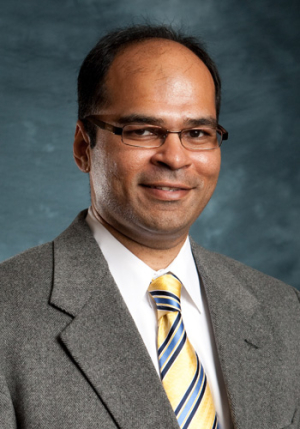One day, people in need of a heart transplant won’t have to wait for a donor organ to become available. Instead, hearts (and other organs) will be grown the lab, often out of the patient’s own cells.
This seemingly science-fiction future will only become real, though, thanks to the efforts of researchers like Ravi Birla, associate professor of biomedical engineering with the UH Cullen College of Engineering.
Birla has won a $788,000 grant from the National Institutes of Health to study the best method of growing three-dimensional cardiac patches and conditioning these patches to behave like normal heart tissue. Originally awarded when Birla was a researcher at The University of Michigan, this grant has now officially been transferred to the University of Houston.
Growing cardiac patches can be compared to growing a plant. You need seeds and fertile soil. In this case, the seeds come in the form of various types of cardiac cells, while the soil is a gel containing different chemicals, called growth factors, that encourage cell culture health and growth.
In this research, Birla will seek the best method of growing a cardiac patches by adjusting several of these factors, including the number and proportions of cells he starts with, the concentrations of the different growth factors, and the time taken to grow the patch.
A well-grown patch, in isolation, isn’t the end-all, be-all of cardiac tissue engineering, however. Getting that patch to actually behave like heart tissue is key. For this, Birla designs and builds special instruments called bioreactors. “We use them to try to mimic the body’s electrical stimulation, stretch stimulation and perfusion stimulation. All the mechanical and electrical cues that cells encounter in the heart, we try to recreate in the lab.”
As with the actual patch growth, in this study Birla will adjust the stimulations applied by the bioreactors – specifically the stretch stimulation. He will then study the patches both in vitro and in vivo, using animal models, to determine which offer the best functionality.
“This is an exciting time in the field of tissue engineering,” said Birla. “Studies like this one can result in cardiac patches to repair damaged hearts, and one day may lead to the growth of entire organs in the lab. We are basically working to eliminating transplant waiting lists and save thousands of lives each year.”
